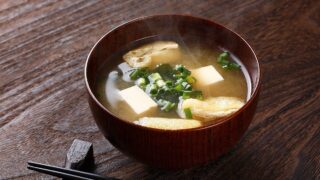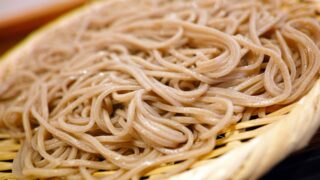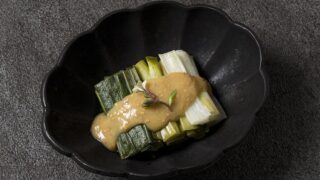[ad_1]
Japan is known for its rich culinary traditions and unique ingredients. One of the most fascinating aspects of Japanese cuisine is the use of fermented ingredients. From shoyu to koji, Japanese fermented ingredients add depth of flavor and complexity to a wide range of dishes. In this article, we will take a deep dive into the world of Japanese fermented ingredients, exploring their history, production, and culinary uses.
Shoyu: The Japanese Soy Sauce
Shoyu, or Japanese soy sauce, is a staple in Japanese cuisine. It is made from fermented soybeans, roasted wheat, salt, and koji mold. The fermentation process can take anywhere from six months to three years, during which the flavors develop and deepen. Shoyu has a rich, complex flavor with a perfect balance of saltiness, sweetness, and umami. It is used in a variety of dishes, from sushi and sashimi to soups, stir-fries, and marinades.
Miso: A Versatile Fermented Paste
Miso is another essential Japanese fermented ingredient. It is made from soybeans, rice or barley, salt, and koji mold. The mixture is fermented for anywhere from a few weeks to several years, resulting in a thick, flavorful paste with a strong umami taste. Miso is incredibly versatile and is used in soups, marinades, dressings, and as a seasoning for various dishes. There are many different types of miso, each with its own unique flavor profile and richness.
Koji: The Miracle Starter Culture
Koji is not an ingredient itself but is a key component in the production of many Japanese fermented foods. Koji is steamed rice, barley, or soybeans that have been inoculated with a mold called Aspergillus oryzae. This mold breaks down the starches in the grains into simple sugars and also produces a variety of enzymes that contribute to the fermentation process. Koji is used to produce shoyu, miso, sake, and mirin, among other fermented products.
Sake: The Japanese Rice Wine
Sake is a traditional Japanese rice wine that is made from polished rice, water, yeast, and koji mold. During the fermentation process, the koji mold converts the starches in the rice into sugars, which are then fermented into alcohol by the yeast. The result is a complex, aromatic beverage with a delicate balance of sweetness and acidity. Sake is enjoyed on its own or paired with a wide variety of Japanese dishes.
Conclusion
Japanese fermented ingredients like shoyu, miso, koji, and sake have been integral to Japanese cuisine for centuries. Their rich and complex flavors add depth to a wide variety of dishes and are a testament to the skill and ingenuity of Japanese food artisans. By understanding the history, production, and culinary uses of these fermented ingredients, we can gain a deeper appreciation for the flavors and traditions of Japanese cuisine.
FAQs
1. What is the difference between shoyu and soy sauce?
Shoyu is the traditional Japanese soy sauce, which is made using a fermentation process that typically includes roasted wheat and koji mold, resulting in a richer and more complex flavor compared to regular soy sauce.
2. How do you use miso in cooking?
Miso can be used as a base for soups and broths, a marinade for meats and vegetables, a seasoning for salad dressings, and as a flavor enhancer for a wide range of dishes.
3. What is the role of koji in Japanese fermentation?
Koji is a key component in Japanese fermentation as it produces enzymes that break down starches into sugars, which then fuel the fermentation process.
[ad_2]










Comments